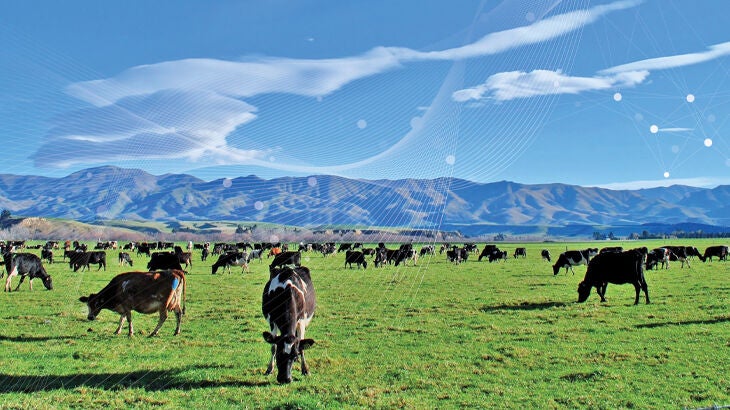Country -
Up to speed

The connectivity gap between urban and rural New Zealand has started to close as access to more reliable and higher speed internet connection enables new technology and investment to bring the rural economy literally up to speed, helping to improve productivity throughout the sector.
Significant advances have been made in recent years to give rural New Zealand better access to internet and mobile phone coverage, with even better connectivity on its way for many farmers and growers – both in the office and out in the field.
Mike Smith, chairman of the Wireless Internet Service Providers Association (WISPA), says this is a tribute to the role technology changes and innovative problem-solving have brought to this space. Thanks in part to the input of New Zealand’s many local internet service companies, some smart workarounds are helping get more and more farmers online with internet speeds that can match those enjoyed in the towns and cities.
“And we are still seeing plenty of work continuing through the Rural Connectivity Group with its operations shared among the big telco firms to keep building towers to deal with blackspots throughout the country, and this work is likely to continue for a while yet,” he says.
Smith is also reassured that rural internet continues to be one of the few national infrastructure initiatives that manages to maintain its momentum regardless of what government is at the wheel.
“It has been realised this is infrastructure that is not like building a bridge, you don’t just stop when it’s finished. The technology is always advancing and shifting, demanding ongoing investment to keep up.
“We are getting close to the point where there is no place in New Zealand you cannot get some level of internet connectivity.”
Smith agrees that estimates of about $500 million to get the remaining five percent of rural New Zealand connected with broadband are not too far off the mark, and an increasing variety of technology is presenting opportunities for rural communities to improve productivity through better connection.
“We are starting to see a combination of options. This includes more fibre expanding through rural areas, setting the gold standard for speed. But ‘near fibre’ technology like cellular 5G is also coming through, with near fibre-like speeds.”
Regional wireless service operators, with their close links to the communities they work in, are now playing a big part in getting fibre rolled out well beyond the original programme overseen by the big operators largely in rural areas.
“We can see massive expansion of fibre into rural areas over the next three years,” he says.
While better access to broadband is generally going to provide an opportunity to improve productivity from the farm office, better connection out in the field is also required to enable more technology to be used by farmers.
Craig Young, chief executive officer of TUANZ, the Tech Users Association says the development of the Starlink satellite network is invaluable tech for filling in blank spots in rural New Zealand’s broadband coverage, but it’s not a silver bullet.
“We are already seeing areas of the country where users are at their maximum and the system cannot take any new subscribers.
He would also like to see market competition make connectivity more affordable and readily available to rural New Zealand.
“What we want to see now is more new companies providing the service to help drive down the cost and increase that capacity.”
Young expects to see other providers come into the market in the next 18 months with a technology that – at this stage – will only be capable of transmitting text via mobile phones.
However, this will still provide a huge benefit to rural areas that have previously experienced very isolated connection, if any.
“Even that is a great start from a health and safety perspective alone. We saw with Cyclone Gabrielle, just that ability to let your family know you were okay was critical.”
He expects cellular voice calls via satellite will still be sometime further, although companies have intimated it could be by late 2024.
Smith and Young see improved internet speeds in rural areas as a well-timed investment that is creeping ever further beyond its original urban hook ups.
As more and more farmers start to consider data-rich technology like digital mapping, self-driving equipment and the adoption of artificial intelligence (AI) technology, the need for that speed and capacity will only grow.
One such type of technology is “edge computing”, an emerging technology where data is processed near to where Internet of Things (IoT) remote devices and sensors are operating.
It removes some of the risk around remote “cloud computing” servers, effectively putting a small farm server close by and enabling access to data even when offline, unlike cloud computing services.
Increasingly overseas, such installations are being used on farms to oversee the masses of data generated by the likes of automated machinery and remote task operations.
“This is the type of technology that fibre enables and add 5G to that in those areas without fibre - it really starts to open up what you can do in your business. We want to see a more connected rural New Zealand because that is good for all of New Zealand,” says Smith.